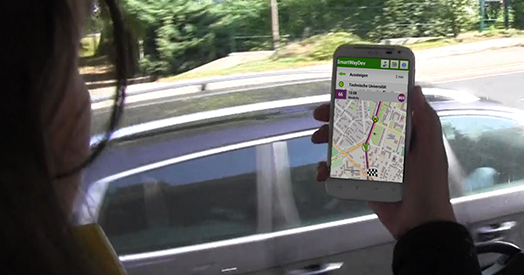Concept

Being able to find one’s way within the transport network of big cities, to individually choose one’s means of transport and to be guided to one’s destination reliably and independent from interchanges and interruptions- that is the concept behind the public transport navigation system that was developed within the EU-funded project SMART-WAY.
Based on conventional connection information systems that are enhanced by real-time data, the SMART-WAY solution offers customers real navigation between one station and another. The users are able to move freely without any previous knowledge of either line network or schedules and because their location is constantly monitored, they will be reliably guided to their destination with the help of different means of transportation.